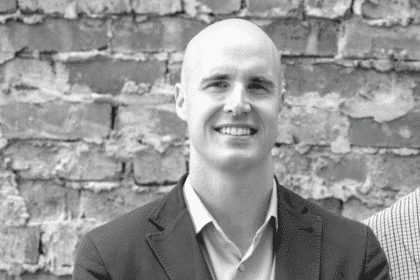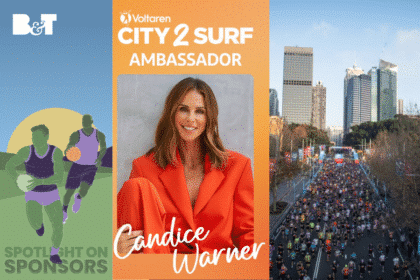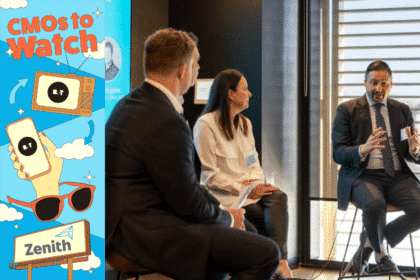In part two of B&T’s coverage of Tourism Australia’s first global campaign since 2016, the peak body’s CMO Susan Coghill explains the logic and the effort that’s gone into having Australia overwhelmed (in a good way) with high spending visitors. If you missed part one, fear not it is here!
In a departure from the traditional TVC as the centre piece of the campaign, this year’s vintage of Australia on tour has a nine-minute film as the centre piece of the work.
And because this year’s campaign is truly global, the story had to have universal appeal rather than just focusing on cultural similarities such as between Australia and the UK (as was the case with Matesong) or the US with Dundee the Return.
Appealing to the whole world is an ambitious undertaking and so Coghill was comforted by the proposition, territory and execution testing carried out by System1.
“John Evans, the chief growth officer for System1 in London, wrote to me last week and said: Just remember, you’ve got amazing test results that’s coming out of all of the markets where the campaign is going to run. You’re in a really good place,” Coghill confides in me.
Another big piece of research Tourism Australia did was around brand codes. What are the short-hand associations people make with Australia?
“At a time when we’ve been less top of mind because we’ve been less active … and at a time when it’s more competitive, we need to make sure that everything we do is unmistakably distinctly uniquely Australian,” says Coghill.
When you consider brand codes in this light, Ruby the Roo becomes an obvious choice. “I mean it’s kind of hard to mistake an ad for somewhere else when you’ve got a kangaroo,” quips Coghill.
Bringing In The New
The benefit of the longer format campaign allows Ruby the Roo to have a backstory. She is not just a kangaroo, she’s a souvenir kangaroo. A box-fresh plush souvenir. She is stuck in a box in a gift shop, which happens to be on the Great Barrier Reef, longing to see the country.
Ultimately, she’s going take us on a journey around Australia. But who Ruby really is, Rose Byrne, is instrumental in the campaign’s potential for success. In the buddy trope story, Ruby’s buddy is a unicorn (voiced by Will Arnett).
Byrne is one of Australia’s best exports and thanks to a string of hits such as Netflix’s ‘Physical’ she’s extremely well recognised around the world. In fact, next week (October 26), Byrne is scheduled to appear on the Tonight Show with Jimmy Fallon where she will discuss the campaign offering not only a big TV audience (1.5 million average), but a gigantic social reach (30 million YouTube subscribers alone).
And why is Ruby a CGI character?
Research has continually found creating brand new characters delivers great longevity flexibility and cut-through. Think the Bundy Bear, The Talking M&Ms and even those annoying bloody Meerkats and its obviously true.
Ipsos’ data suggests that celebrities score pretty well on stronger branded attention. But their power pales when measured against brand characters or mascots. Ads that use brand characters rank right below branded music, at 6.1x more likely to be high performing
“They tend to be long running campaigns, because they work to get value out of them,” reasons Coghill.
Coghill also adds that Tourism Australia intends to have some fun with Ruby on TikTok, Twitter and all the social channels.
Sticking With The Old
Importantly, Tourism Australia has made the strong commitment to not move away from the ‘There’s nothing like Australia’ as the country’s overarching brand platform.
“It gives us great strength and flexibility across all parts of our business because we do a lot of B2B as well. But we needed to evolve the strategy to meet the moment, which is around, there’s nothing like Australia to make you feel welcome. The unique nature of Australians. And that’s the culture, the character, the lifestyle, bringing that to the fore,” explains Coghill.
Come and Say G’day is the campaign’s line. That line is actually stolen from the Paul Hogan campaigns in the 1980s admits Coghill.
“G’day is a really strong brand code that came up through that research. I think it’s the charming ‘hello’ that people encounter when they’re down in Australia. But I think it’s also when they meet Australians around the world. People become more of their natural national character when they’re overseas.”
Men At Work
As mentioned above, characters ranked above celebrities and only below branded music as the truly secret sauce for cut-through. Tourism Australia made not have had an original branded song commissioned, but they may as well have as Men At Work’s “I come from a land Down Under” is as close as you can get to an unofficial anthem.
Tourism Australia did commission emerging Arnhem Land artists, King Stingray, to write their own version of the Aussie iconic hit. Singing in language as well as English, this version is authentically Australian without being too nostalgic. King Stingray has actually released its version of the tune to coincide with the campaign’s launch.
The Greatest Talent
Directing the film is Michael Gracie. Gracie is an Australian director who worked for two years at animation and visual effects studio Animal Logic from 1994 to 1996 as an animator and visual effects compositor. He then literally lived out of hotel rooms for 10 years as he made commercials in LA, New York, London and Australia. He then met Hugh Jackman on a TVC shoot. Directed the Greatest Showman and the rest as they say, is history.
So the formula in a way is great Australian talent, creating these brand new characters, amazing locations or people or experiences, and then that banging track.
Credits:
- Creative – M&C Saatchi Sydney
- Production Company, Film and TVC – FINCH
- Animation Company – Platige
- TVC Music Score – King Stingray / Level Two Music
- Film Music Score – Jonathan Dreyfus and Amy Andersen, including William Barton, Frank Yamma, the Marliya Gondwana Indigenous Girls Choir and Iwiri Choir.
- Media – UM (Global team)
- Digital – Digitas
- Public Relations – Poem (Global agency) / Ogilvy PR
- Social – Apparent








